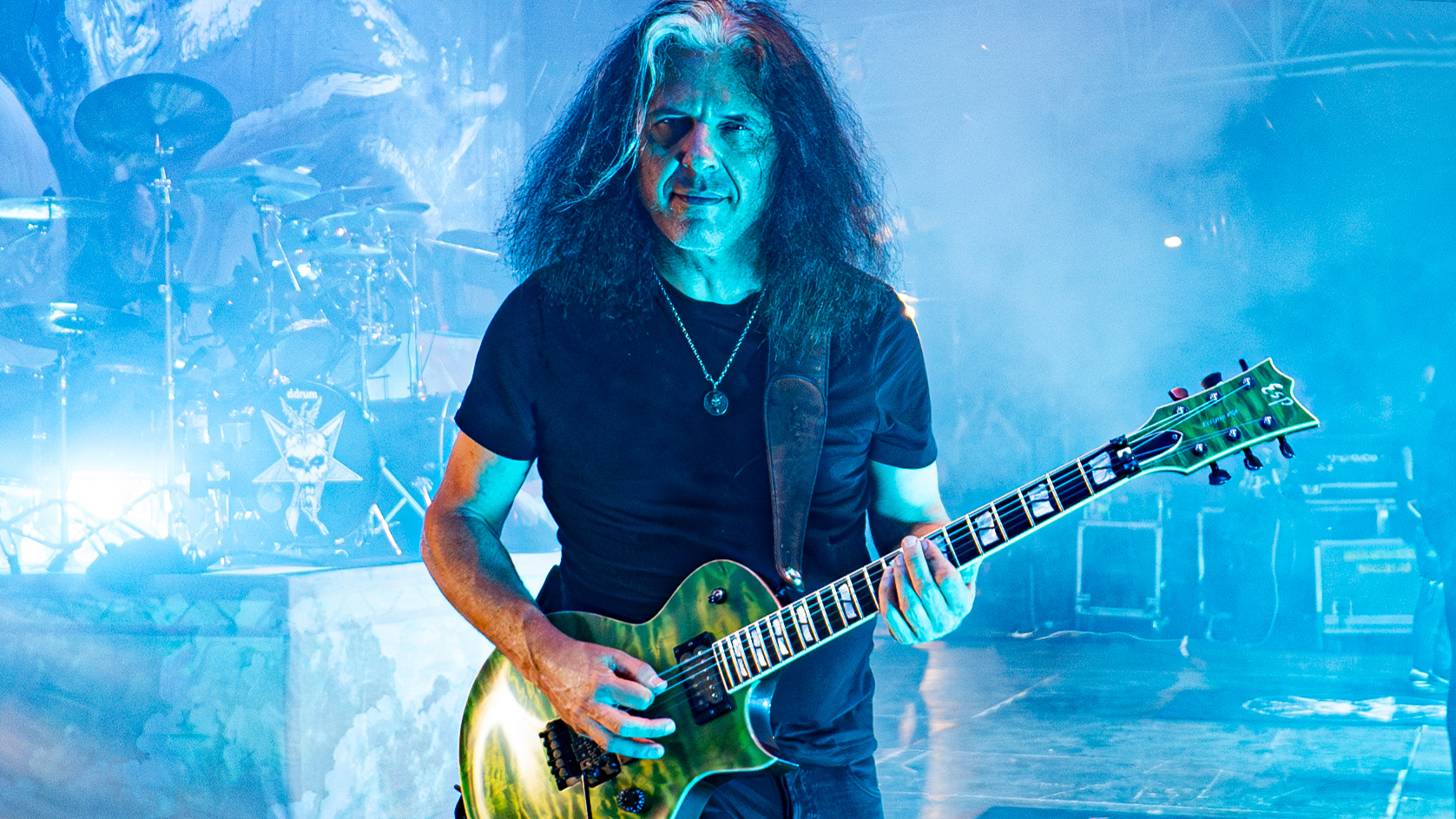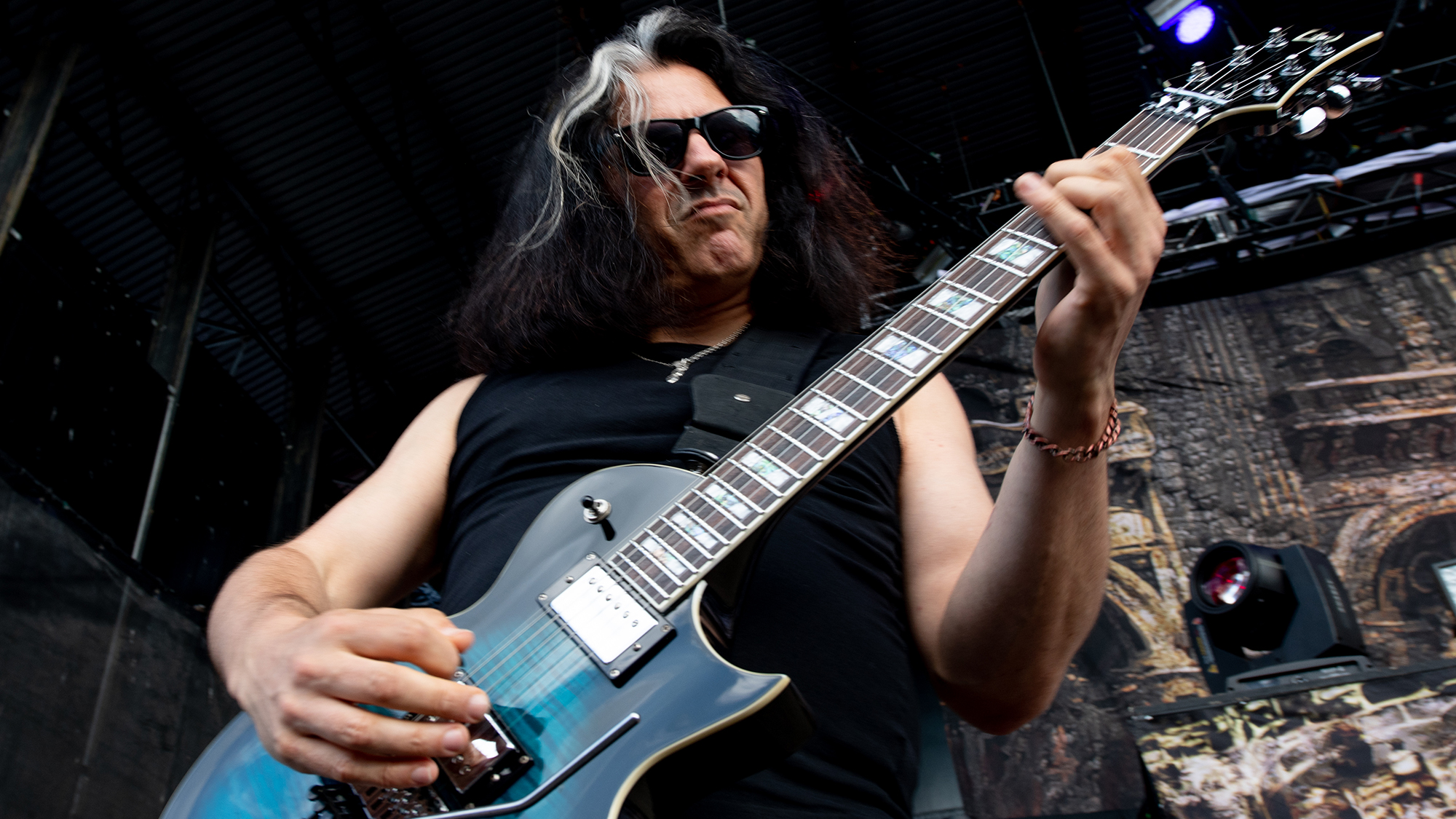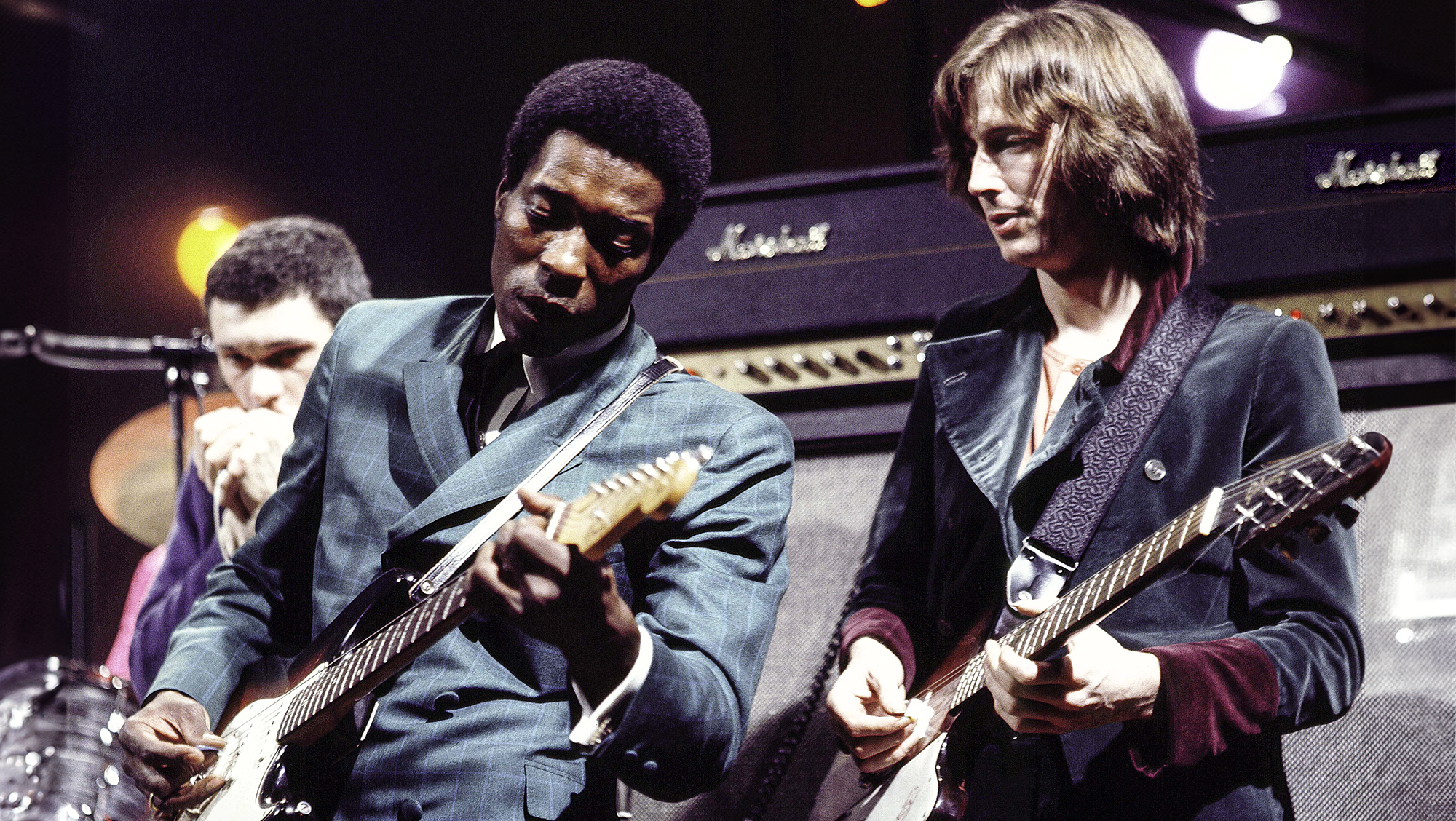"It hit me hard, much like Eddie Van Halen’s ‘Eruption’ did years earlier. This whole new world opened up for me.” Alex Skolnick on five jazz albums every rock and metal guitarist needs to hear

Back in the early 1980s, Alex Skolnick was pretty much like any other teenager. He loved electric guitar players like Eddie Van Halen, Randy Rhoads and George Lynch.
“I was caught up in the whole screaming lead guitar thing,” he says. “I was part of the Eddie Van Halen generation, but I also liked Michael Schenker and Uli Roth, and Gary Moore. Rock and metal guitar was really exciting at that time.”
It wasn’t long before Skolnick himself was a hot guitarist — a prodigy even. Before he could drive, he joined the Bay Area thrash metal band Legacy, which soon changed their name to Testament, and at age 18 he cut his first album with the group, The Legacy, which caused the guitar community to quickly anoint him as one of the most promising young players on the scene.
At the same time, Skolnick started to feel as if something were missing. “The screaming guitar playing that I had been excited about was becoming oversaturated, overdone — the market was flooded with people doing the same thing. You were almost required to play an Eddie Van Halen–inspired solo, even if that wasn’t your specialty. Things were feeling a little stock.”
Skolnick found rebirth and rejuvenation when he was least expecting it. He was recording Testament’s third album, Practice What You Preach, at Fantasy Studios in Berkeley, California, when one day he heard what he thought was a band playing in another studio room.
“The music was so loud, so I had to check it out,” he recalls. “Turns out, it wasn’t a band. It was an engineer remastering what turned out to be John Coltrane’s Live at Bird land. I had heard of Coltrane, but this was my first time actually listening to the music. It hit me hard, much like the way ‘Eruption’ did years earlier. I knew I had to investigate this music.”
Which he did, at first as a casual tourist, then as a dedicated convert. “There were so many great guitarists I got caught up on — Mike Stern, John Scofield, Robben Ford — all the Miles Davis, plus bass guitar players like Marcus Miller and Darryl Jones,” he says. “This whole new world opened up for me.”
All the latest guitar news, interviews, lessons, reviews, deals and more, direct to your inbox!

He found that learning to play jazz guitar, however, wasn’t an automatic. “It was almost like starting over,” Skolnick says. “The language was so different from what I knew. For a while, I couldn’t apply any of my skills, but once I put my 10,000 hours in on jazz, then I could incorporate various techniques I knew from heavy metal. It was something of a 10-year process.”
Today, Skolnick is no longer a tourist — he earned a degree in jazz from the New School in New York City, and since 2002 he’s led his own outfit, the Alex Skolnick Trio. On their first few albums, the band specialized in artful jazz interpretations of rock classics, but 2018’s Connundrum saw the emphasis on all-original jazz material played acoustically.
The Trio's new album, Prove You're Not a Robot, comes out in September and features all-original material.
And although he left Testament in 1993, Skolnick rejoined the fold in 2005 and has remained with the thrash kings ever since.
“I think I’ve found my niche,” he says. “I love playing jazz and jazz rock, but I still enjoy heavy metal. Lately, I’ve been playing more acoustic. Somehow, it all works. I’m comfortable being an all-around musician.”
Asked to name and discuss his selections for jazz albums that might appeal to rock and metal fans, Skolnick explained that he didn’t want go for the obvious.
“It would be easy to pick fusion or crossover records that are categorized as jazz,” he says. “Instead, I’d rather pick albums that even straight-ahead purists would agree on in terms of jazz cred.
“But there’s also an undeniable special quality in terms of the intensity, instrumentation, melody and directness, along with some other element that separates them from mellow jazz that might be heard at a cocktail party.”
He laughs. “This isn’t Vince Guaraldi.”
Joe Henderson — Inner Urge (1966)
“I’m talking mainly about the title track, which is just incredible — lots of energy and intensity. But I think a rock fan should be able to appreciate the whole album. It’s got some blues on it — I guess it’s more jazz-blues — but rock and metal fans like the blues, so this is a language that feels natural to them.
“The thing about the title track — it has what’s considered to be one of the more challenging melodies in the jazz world to learn. Jazz musicians call that the ‘head’ of the tune — it’s almost like a riff. The same way you can hum a riff, you can do the same with the head of this song, though it’s a lot harder and faster. Even so, it’s still got a catchiness to it.
“I got into Joe Henderson when I moved to New York City and got my degree in jazz at the New School. Inner Urge was sort of required listening — you just had to know it. It’s got a prog-like complexity, and a lot of it is very dark and introspective. But there’s nothing sleepy about it. It’s full of attitude.”
Charles Mingus — Mingus Ah Um (1959)
“In a similar way to Inner Urge, this album has an attitude that rock and metal fans should find appealing. His melodies are sophisticated, but I find them very catchy and singable. The first tune, ‘Better Git It in Your Soul’ is so cool — it’s almost like a gospel song. I’ve never been a religious person, but I can appreciate this kind of gospel tune. It reminds me of James Brown portraying a reverend in The Blues Brothers and how he tears down the house.
“Anybody who plays guitar seriously will recognize ‘Goodbye Pork Pie Hat’ from Jeff Beck’s cover version on the album Wired. Supposedly, that was the most money Mingus ever made off a recording, so after that he kept sending Beck songs.
“’Boogie Stop Shuffle’ is another great one. It’s got a melody that’s almost like a hard rock riff. I’m convinced that whoever composed the Spider-Man cartoon theme borrowed from this melody. It’s the same form. I should also point out ‘Fables of Faubus,’ which is a protest song that’s full of serious attitude. Mingus wrote it about Orval Faubus, the governor of Arkansas at the time. He was like a George Wallace type. Listen to the song — you can hear Mingus’s righteous anger.”
George Benson — The George Benson Cookbook (1966)
“Like a lot of people, I first heard George Benson when he was having pop hits on the radio — things like ‘On Broadway’ and ‘This Masquerade.’ Then I saw the Bob Fosse movie All That Jazz, which doesn’t really have anything to do with jazz. There was this scene where all of these dancers are auditioning to ‘On Broadway,’ and I remember thinking, ‘Wow, the guy is playing guitar and singing along.’ I liked it, but it sort of hit me as adult music. It didn’t hit me like rock ‘n’ roll.
“A while later, it was probably in the ‘90s, and I heard early George Benson on a jazz station. I couldn’t believe it. ‘Wait a second… That’s the same guy?’ I realized there was more to George Benson than these light kind of pop tunes.
“The George Benson Cookbook is fantastic. It’s full of baritone sax, which adds a heaviness that’s very relatable to rock ‘n’ roll. ‘The Cooker’ is my number one pick off the album. It’s blues, but it’s high-speed, high-energy blues. Another great tune is ‘Return of the Prodigal Son.’ It’s basically a midtempo groove, and the solos are on just one chord, so it’s easy to follow along to.
“It’s very inviting music, and George’s tone has a lot to do with that. It’s big and rich, and he sounds like he’s right in the room with you, playing through a small Fender combo. I’ve learned a lot of his lines, and I try to incorporate them in my playing. But it’s sort of impossible to get his lines exactly — only he can play them as they’re meant to be played.”
Larry Young — Unity (1966)
“Larry Young was an incredible jazz organist who, in my opinion, had a very important connection to rock ‘n roll. If you listen to ‘Lazy’ by Deep Purple, or even ‘Smoke on the Water,’ particularly the live version on Made in Japan, Jon Lord played a lot of parts that sound like he had listened to Larry Young. I’m not sure of this, but it sems like a possibility.
“Larry Young was the first organist in one of the earliest fusion projects, Tony Williams Lifetime, which also featured John McLaughlin. He was a jazz guy who played on records that pointed to where music was going.
“Unity is very much a jazz musicians’ jazz record. If you’re a casual listener, you might not be aware of it, but all the students, teachers and insiders know it on a serious level. There are tracks that might appeal to rock and metal fans, like the tune ‘If,’ which is a blues with such a cool vibe and energy. Joe Henderson plays the first sax solo, and I just love the comping behind him. Elvin Jones is the drummer — he plays on so many of my favorite jazz records. He goes places you wouldn’t expect.
“You have to get over the notion that it’s not guitar, bass and drums. It’s not the same sounds, and the snare isn’t the main focus. Once you adjust yourself, there’s a common thread here. I think any fan of ‘Satch Boogie’ could get into this.”
Chick Corea — Now He Sings, Now He Sobs (1968)
“We’re so not talking cocktail jazz. If you’re at a fancy party for Citibank employees and the hired piano player starts doing stuff from this album, there will be a lot of looks like, ‘What the hell is that guy doing?’
“There’s a song called ‘Steps’ that has a lot of cool dissonance. The drummer is the late, great Roy Haynes, who we lost recently, and I’m convinced there’s a connection between him and Black Sabbath’s Bill Ward. This is crème de la crème musician stuff, but if you listen to the main part of the song, you can almost picture Bill Ward doing his swing-style breaks.
“I should also point out the track called ‘Matrix,’ which is on-fire blues. Chick is playing modern classical ideas, but it's still blues and it all works. He's really pounding the piano when he plays, yet he’s always accurate and in time with the drums and bass. I think this is a magical record. They really caught lightning in a bottle on this one. Rockers should check it out, for sure.”

Joe is a freelance journalist who has, over the past few decades, interviewed hundreds of guitarists for Guitar World, Guitar Player, MusicRadar and Classic Rock. He is also a former editor of Guitar World, contributing writer for Guitar Aficionado and VP of A&R for Island Records. He’s an enthusiastic guitarist, but he’s nowhere near the likes of the people he interviews. Surprisingly, his skills are more suited to the drums. If you need a drummer for your Beatles tribute band, look him up.
